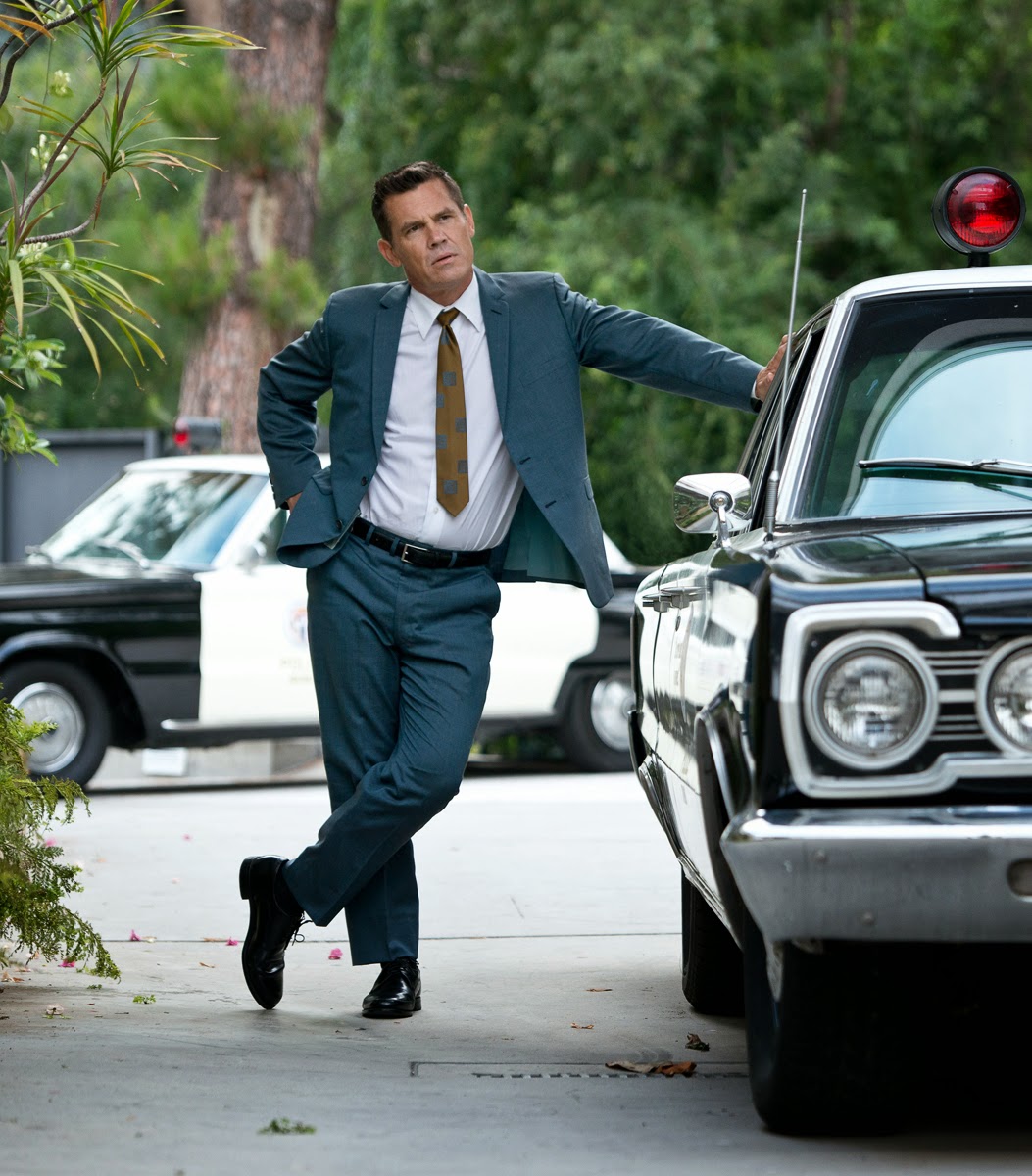From deep within an acrid haze of pot smoke and acid trip-outs strides the smirking oddity that is Paul Thomas Anderson’s Inherent Vice, a slow-burn of noir clichés given a groovy spin not seen since The Big Lebowski or The Long Goodbye, its spiritual successors.
Anderson’s 148-minute spiraling mystery isn’t so much hard-boiled as it is half-baked, although you’ll easily recognize Humphrey Bogart’s Philip Marlowe and Sam Spade in Joaquin Phoenix’s showstopping performance as Larry “Doc” Sportello, a joint-rolling private eye who works out of a doctor’s office and looks like a Vietnam protester — it’s 1970 so his camo-green ensemble with sandals and mutton-chop sideburns makes sense. Doc is visited in the first scene by Shasta Fay Hepworth, an old flame caught in a scheme that’s about to devour her. These types of women — Sin City would call her a “dame” without a wink of irony — usually kick-start movies like this, and Shasta Fay is no exception as Doc is compelled to follow her through hell and back.
Inherent Vice is a labyrinth of vague rumors, half-heard facts and stoned visions. It should come with a road map and a compass. Its convoluted mash of detail and innuendo is told using a small army of characters with names out of a W.C. Fields comedy: Ensenada Slim, Petunia Leeway, Japonica Fenway, Puck Beaverton, Rhus Frothingon, Trillium Fortnight and Sauncho Smilax, Esq. Martin Short — yes, that Martin Short — plays a Dr. R. Blatnoyd, DDS., and his four minutes of screen time are just sublimely perfect.
Adapted from Thomas Pynchon’s 2009 novel of the same name, Vice spends much of its early passages obsessed with Michael Wolfmann, a real estate mogul who’s “technically Jewish but wants to be a Nazi.” Wolfmann was involved with Shasta and pretty much everyone else, including sex workers, Nazi biker gangs, crooked cops, Asian smugglers, new-age cults, drug dealers, grifters and federal agents with names like Borderline and Flatweed. As Doc traces Wolfmann’s whereabouts, he’s pushed all around Southern California encountering wild characters who add more puzzle pieces to Shasta’s fractured enigma of a story.
 The locations and events Doc walks into are as sensational as the character names. I was especially fond of Wolfmann’s wife, who’s hosting a pool party — with cops in full uniforms, including motorcycle helmets, cannon-balling in the pool and manning the grills — yet also mourning her “missing” husband with a black veil to go with her black bikini. You’ll admire the shout-out to Lauren Bacall in her famous “veil scene” in The Big Sleep. There’s a sex club with an erotic menu of offerings I can’t repeat, a mysterious ship called the Golden Fang, biker parties, baseball bat museums, a massive collection of naked-lady ties, Last Supper references, and the Popsicle-eating habits of Detective Christian “Bigfoot” Bjornsen (Josh Brolin), a character who is endlessly weird, but also lovable and goofy. Reese Witherspoon also turns up, which makes for a lovely reunion for the Walk the Line stars.
The locations and events Doc walks into are as sensational as the character names. I was especially fond of Wolfmann’s wife, who’s hosting a pool party — with cops in full uniforms, including motorcycle helmets, cannon-balling in the pool and manning the grills — yet also mourning her “missing” husband with a black veil to go with her black bikini. You’ll admire the shout-out to Lauren Bacall in her famous “veil scene” in The Big Sleep. There’s a sex club with an erotic menu of offerings I can’t repeat, a mysterious ship called the Golden Fang, biker parties, baseball bat museums, a massive collection of naked-lady ties, Last Supper references, and the Popsicle-eating habits of Detective Christian “Bigfoot” Bjornsen (Josh Brolin), a character who is endlessly weird, but also lovable and goofy. Reese Witherspoon also turns up, which makes for a lovely reunion for the Walk the Line stars.
The movie is narrated by a female character who we rarely see, and her words are sumptuous and intoxicating as they ooze out in stanzas of beat poetry forever on the cusp of quoting Allen Ginsberg. The rest of the movie plays out like any Anderson stunner: music that is layered over whole movements, long takes, tracking shots, unbroken passages of dialogue, quirky compositions … you’ll see bits of Anderson’s entire filmography here, from Hard Eight and Magnolia to Boogie Nights and There Will Be Blood. I especially enjoyed his agonizingly slow camera zooms that begin as medium shots and, over the course of several minutes, creep closer to one face as Doc’s investigation is sent into a new orbit.
Inherent Vice goes to great lengths to convince you of the plausibility of Doc’s case, but I found it easier to surrender to the details. The names, locations, times, dates, events … they all grow more tangled as Vice proceeds, and they’re only there to serve the mood and tension of Anderson’s whirlygig of a pulp-noir mystery, which is further proof that the genre will never die.














